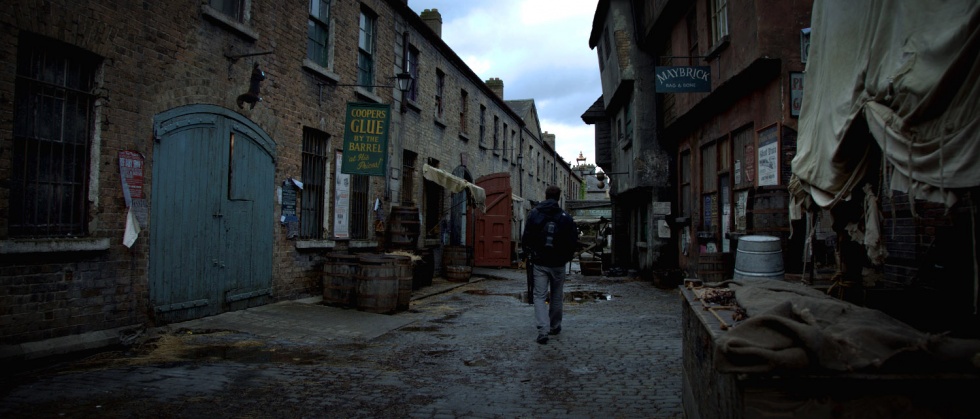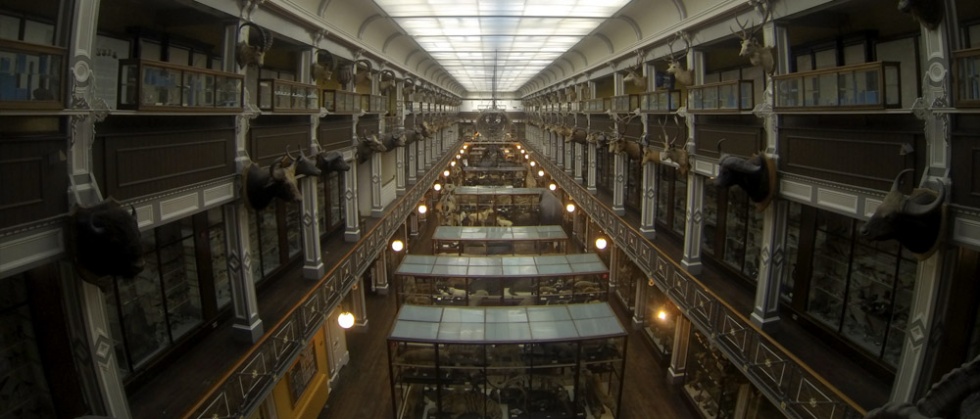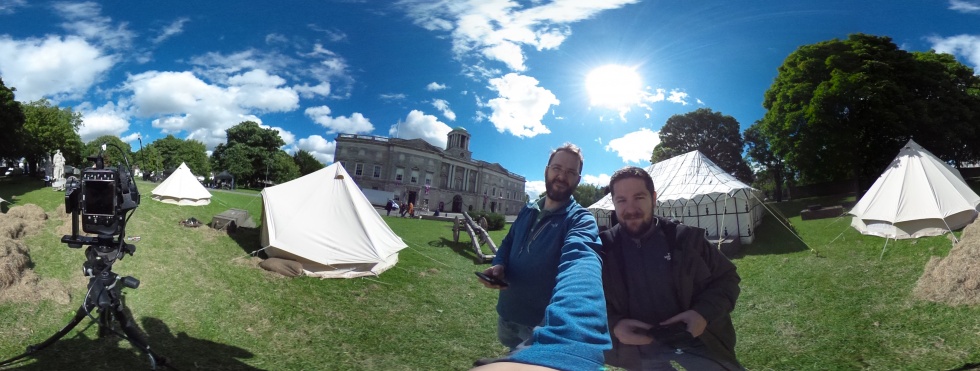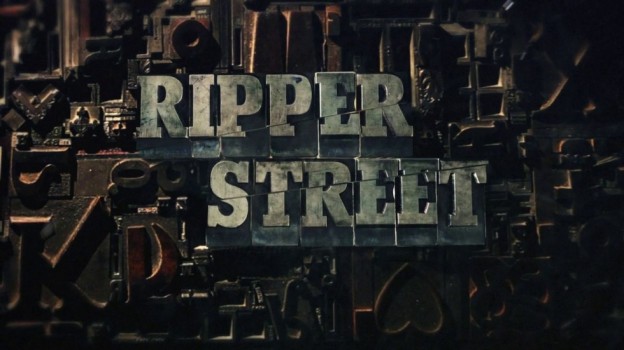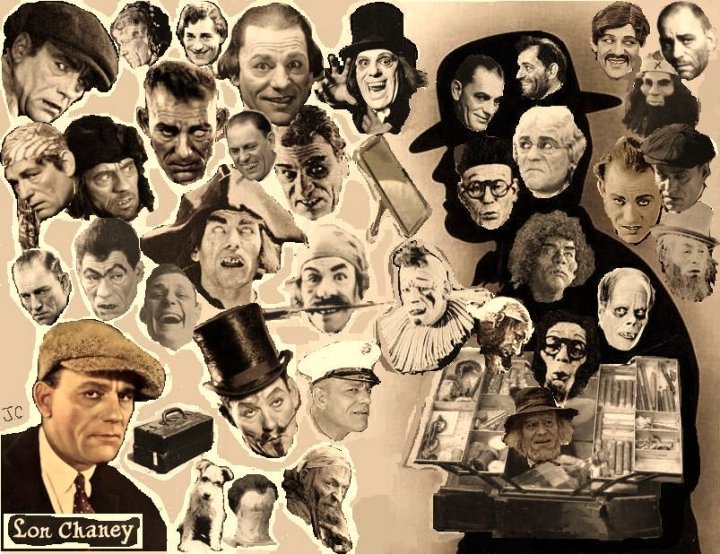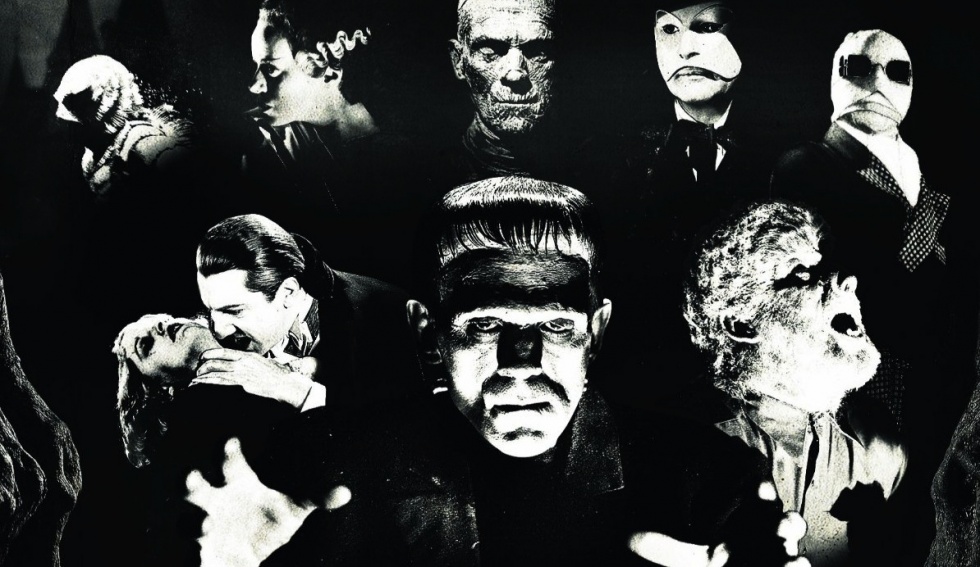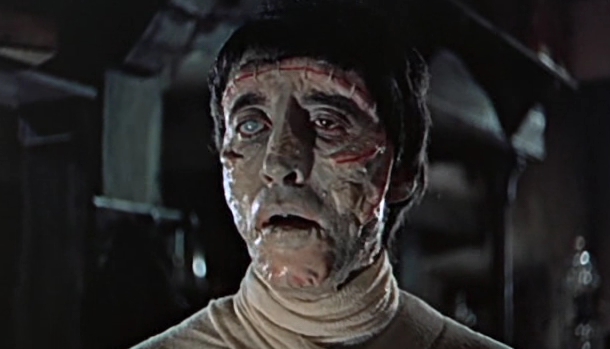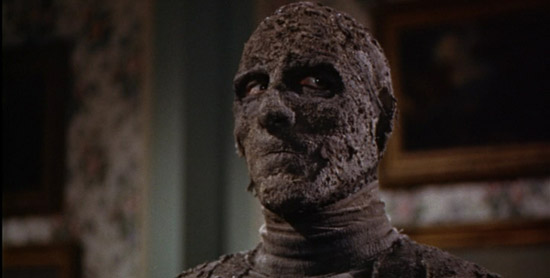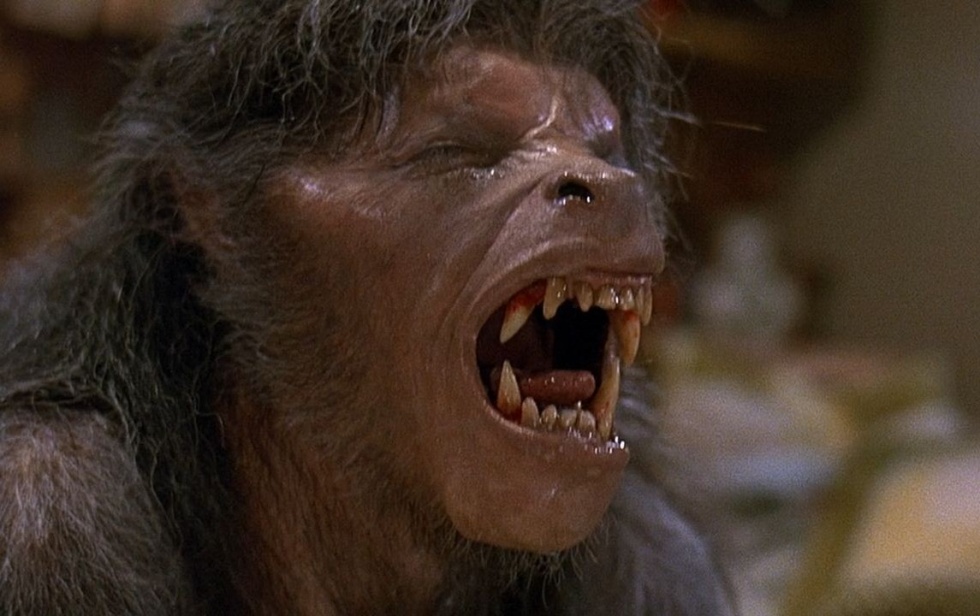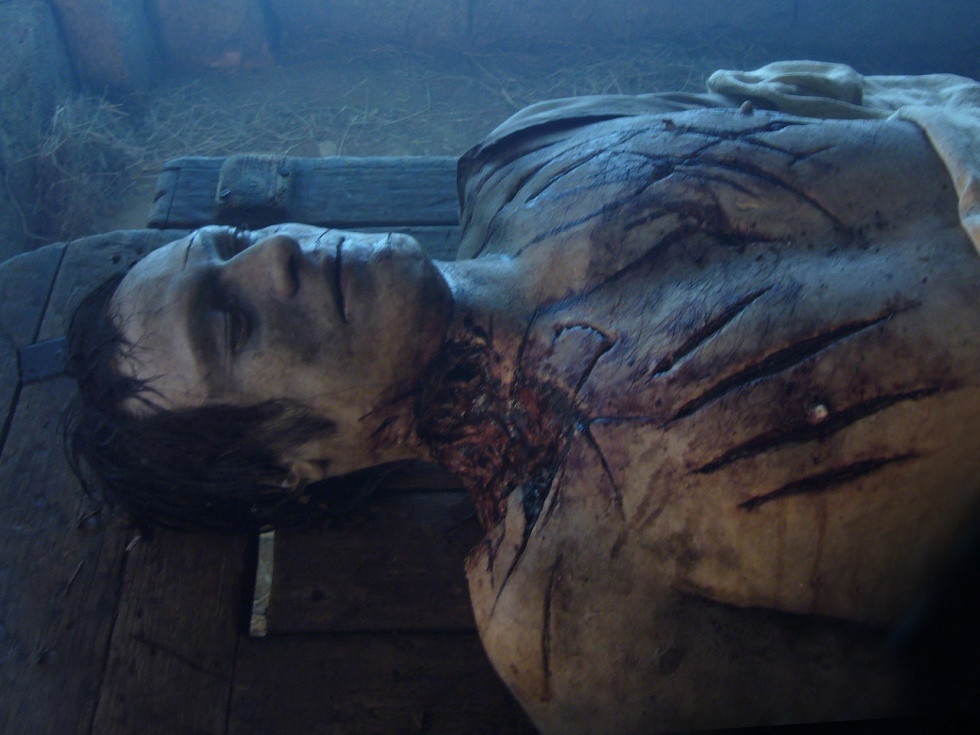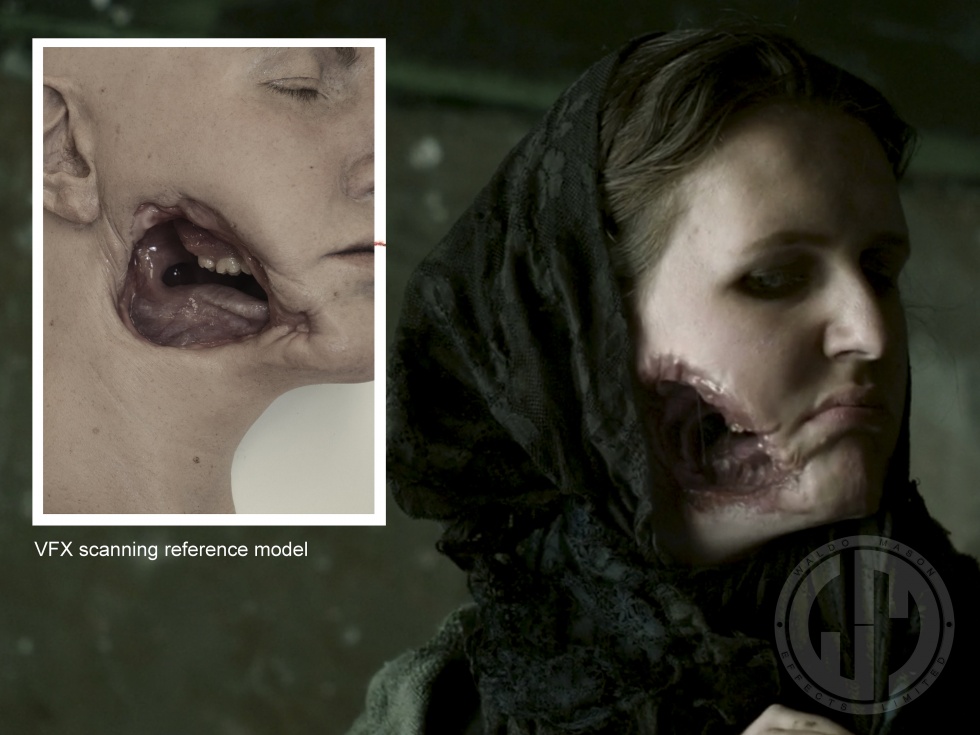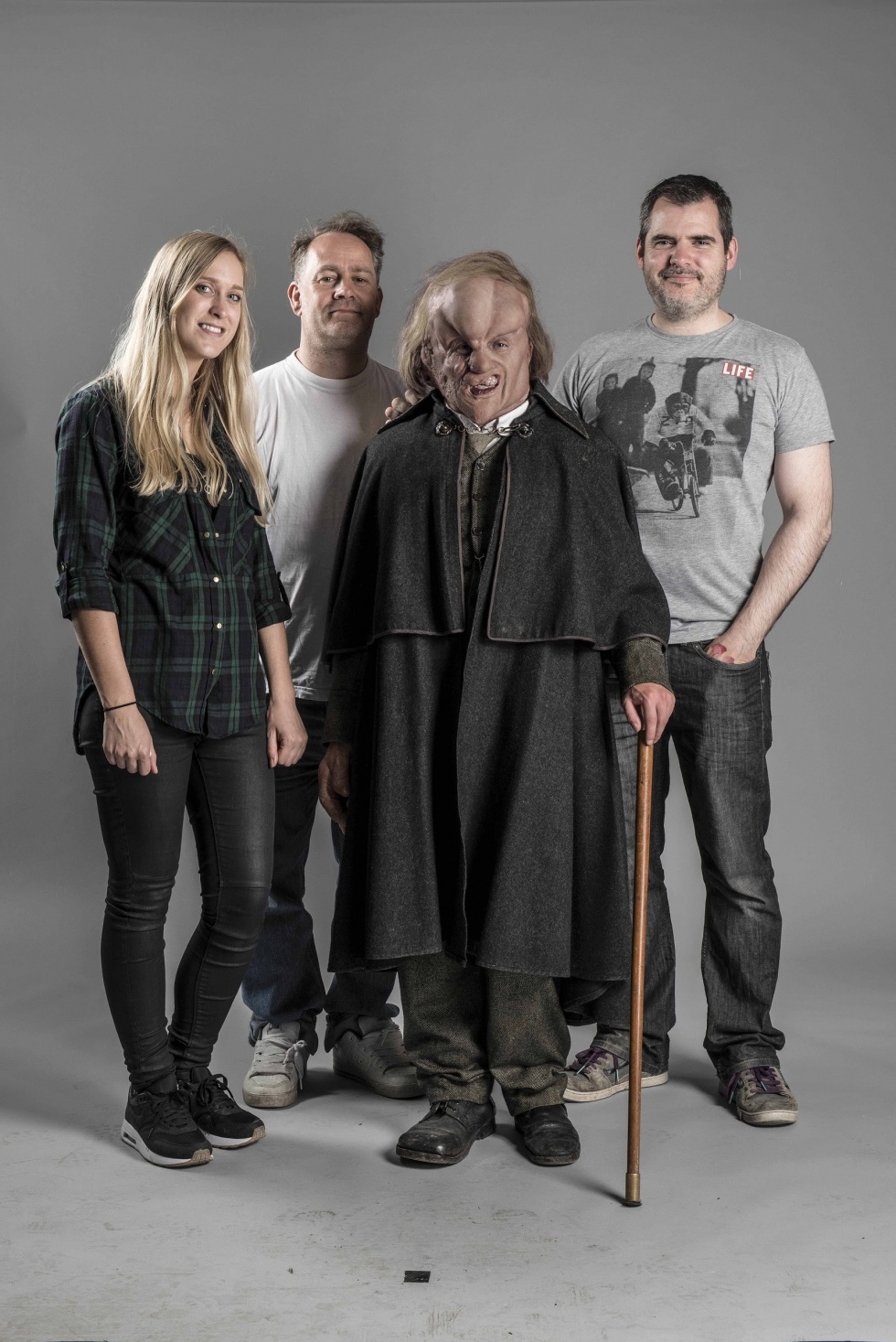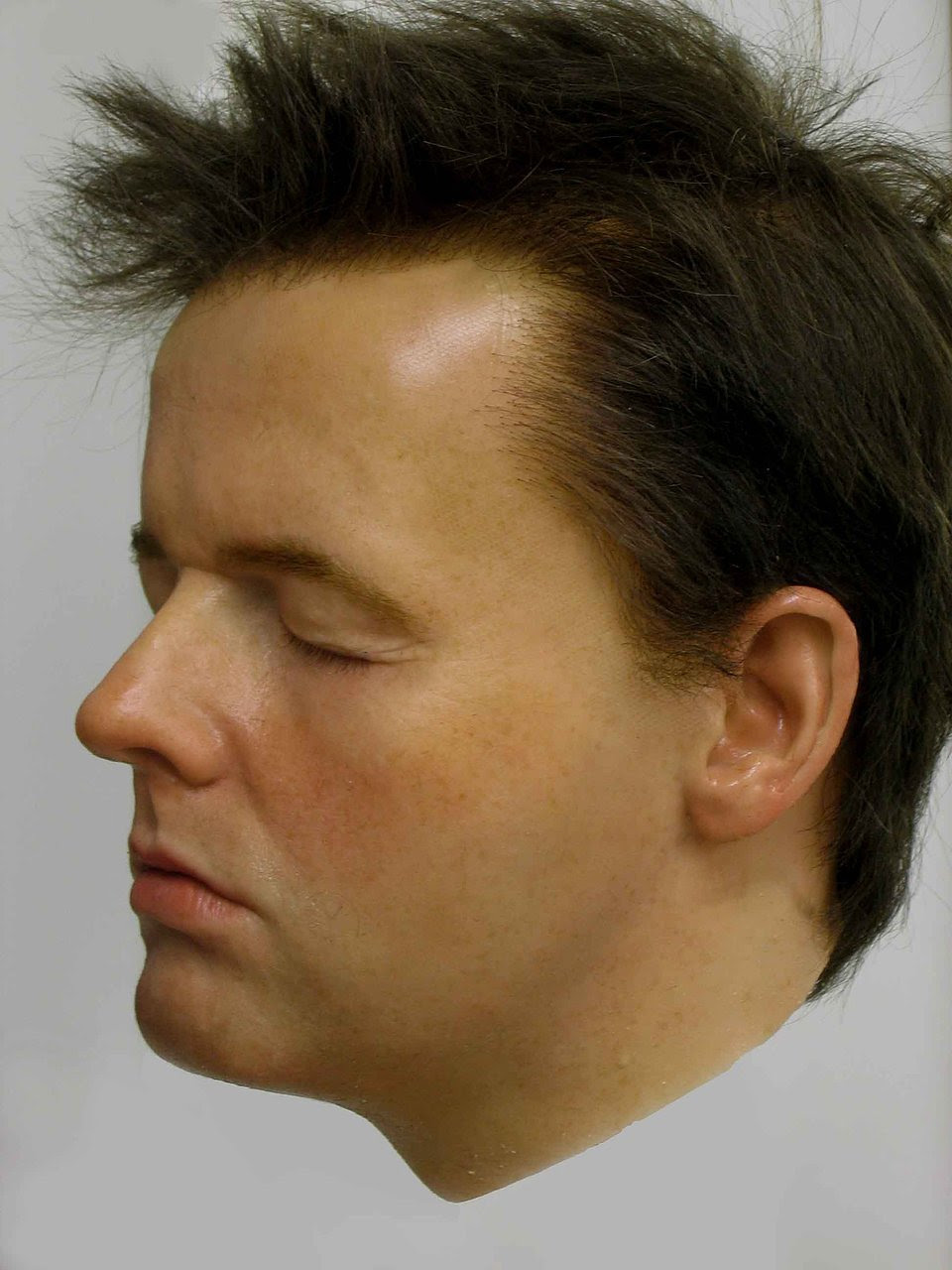The VES Award-winner and BAFTA nominated Visual Effects Supervisor, Ed Bruce (above emerging from the smoke-filled set), has worked on everything from big-budget Hollywood movies such as A Good Day to Die Hard, The Last Days on Mars and Independence Day: Resurgence to some of our favourite TV shows that are a little closer to home including Game of Thrones, The Frankenstein Chronicles and, of course, Ripper Street that we’re here to discuss as well as share some rare and previously unseen images…
An exclusive RIPPER STREET interview
with Visual Effects Supervisor
~ ED BRUCE ~
Interview copyright © Damian Michael Barcroft 2017
Ripper Street images copyright © Ed Bruce/Screen Scene/Tiger Aspect Productions 2016
~
DAMIAN: Ed, little did I know, sitting in the cinema as an eleven-year-old kid watching Young Sherlock Holmes in the spring of 1986, that I was witnessing the first character to be entirely created by computer-generated imagery. And who knew that The Glass Knight, impressive though he may have been back then, was merely a forerunner to Terminator 2’s T-1000 or Jurassic Park’s terrifying T-Rex? Visual Effects (VFX) have obviously come along way and previously only dreamt of scenes and images can now be realized, not only at the movies, but also in the corner of our own living rooms. When did you first become aware of the power and potential of VFX?
ED: From a very early age I have been in love with film. Some love books or music, but for me my medium was film. When I was really young, what I now know as special or visual effects, was never really questioned, and merely intertwined into the films narrative only leaving me in awe of the spectacle. The skeleton fight in Jason and the Argonauts was a particular moment of wonderment. It was magnificent, glorious, beautifully executed and equally terrifying.
 Jurassic Park of course is a benchmark of visual effects for me. It still to this day stands up. A beautiful balance of practical, special effects, animatronics and visual effects. It’s very difficult to re-emulate that feeling I had when the first dinosaur was revealed.
Jurassic Park of course is a benchmark of visual effects for me. It still to this day stands up. A beautiful balance of practical, special effects, animatronics and visual effects. It’s very difficult to re-emulate that feeling I had when the first dinosaur was revealed.
 However, the film that really sparked my imagination and curiosity for how it was crafted was Robert Zemeckis’ Back to the Future. The simple yet effective optical effects of overlaying Doc Brown and Marty against the vanishing, time travelling DeLorean. This mixed with the animated glowing electrical tubes, flashing pops, comets & contrails surrounding the car before it disappeared to 1955. I was mesmerised.
However, the film that really sparked my imagination and curiosity for how it was crafted was Robert Zemeckis’ Back to the Future. The simple yet effective optical effects of overlaying Doc Brown and Marty against the vanishing, time travelling DeLorean. This mixed with the animated glowing electrical tubes, flashing pops, comets & contrails surrounding the car before it disappeared to 1955. I was mesmerised.

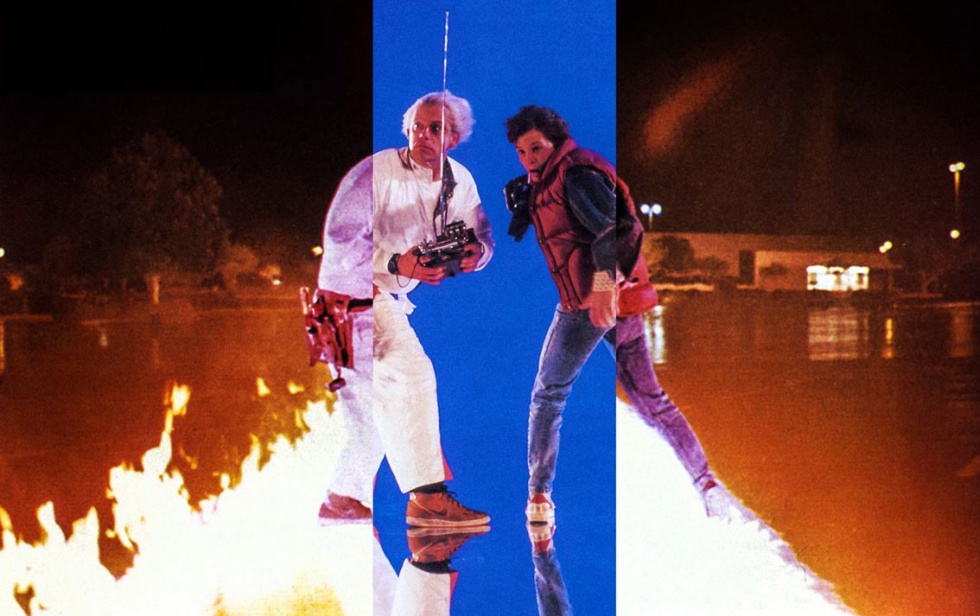
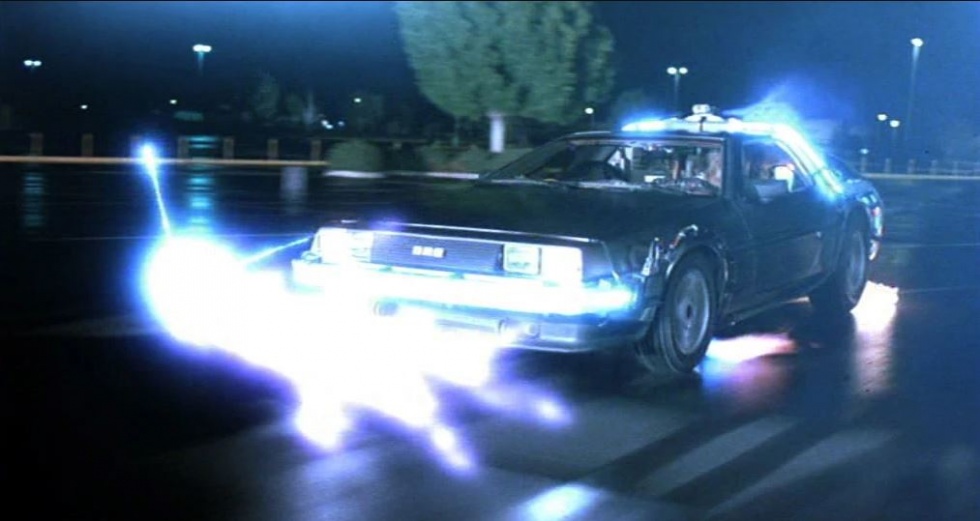 When I was an early teen my family inherited a vast collection of VHS’s, a couple of TVs and a Panasonic M10 VHS camera. It was the beginning of me spending many hours either watching films or creating them. I’ve always enjoyed and appreciated good film making. Sometimes that has been with the support and use of visual trickery. From the simple act of floating walls within 12 Angry Men, allowing the director to reduce the size of the set and increase the claustrophobia and tension, to the bringing alive of creatures or characters, places and planets that don’t exist. I love a good illusion that supports the storytelling.
When I was an early teen my family inherited a vast collection of VHS’s, a couple of TVs and a Panasonic M10 VHS camera. It was the beginning of me spending many hours either watching films or creating them. I’ve always enjoyed and appreciated good film making. Sometimes that has been with the support and use of visual trickery. From the simple act of floating walls within 12 Angry Men, allowing the director to reduce the size of the set and increase the claustrophobia and tension, to the bringing alive of creatures or characters, places and planets that don’t exist. I love a good illusion that supports the storytelling.
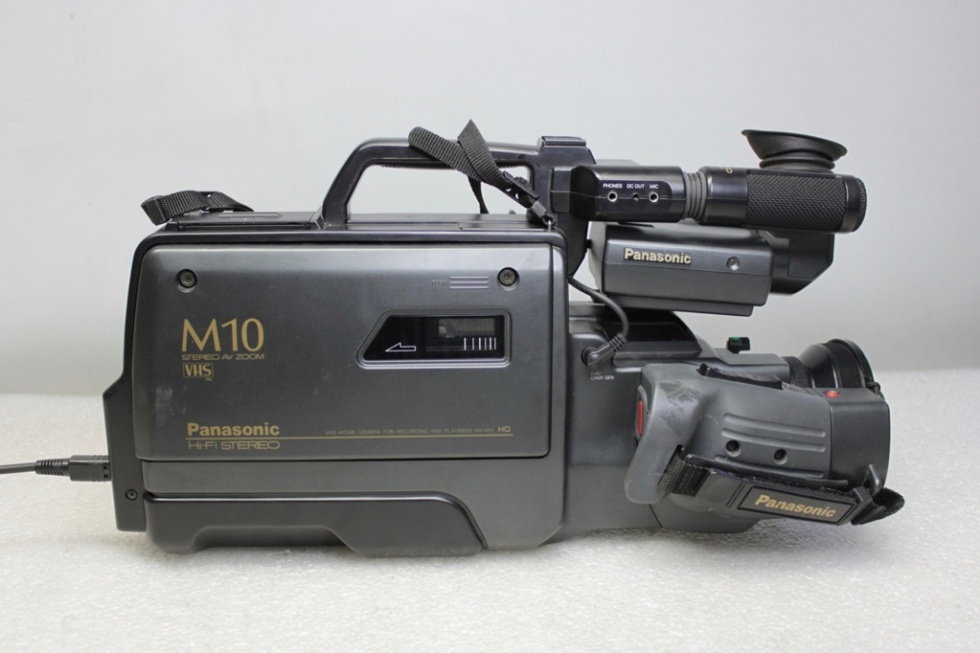 DAMIAN: This may get confusing but I understand that VFX can be categorized into the following: Simulation FX, Animation, Modelling, Matte painting and Compositing. I’m sure it would be useful for both myself and the reader if you could illustrate each of these techniques with examples from your work on Ripper Street.
DAMIAN: This may get confusing but I understand that VFX can be categorized into the following: Simulation FX, Animation, Modelling, Matte painting and Compositing. I’m sure it would be useful for both myself and the reader if you could illustrate each of these techniques with examples from your work on Ripper Street.
ED: There are actually many more categories within the VFX dept. All tools to deliver a complete visual effect. Sometimes you end up using them all to do one shot, but most of the time it’s just a few. Ripper Street VFX has predominantly been about adding to the scale and embedding into the Victorian landscape. For the most part this means we’ve mainly concentrated on set extensions through digital matte paintings and CG buildings.
To give one example that contained multiple techniques and VFX departments would be the fully CG shot of the Kimberly Diamond mine. After a lot of research trying to really understand the scale of these massive mines we were able to plot and design this big high wide shot. We used a technique called 2 and a half D. That’s not 2D and not quite 3D, but somewhere in between where you build simple 3D geometry and project a digital matte painting onto it. We blocked out the camera move to know how far we could push this technique. We found that for the most part 2.5D worked well, however the foreground really required higher detailed 3D assets. These would be machinery, buildings, carts etc. It was also really clear that these mines were full of people. It took a lot of labour to run such large scale operations. CG crowds were created, animated and scattered through the shot. These little tiny visual specks helped to show scale whilst also demonstrate the bustling active mine.
We simulated FX for smoke and atmosphere. Created digital ropes and wires pulling carts and their contents. All of which finally end up within a compositors realm ready to assemble together into a realistic composition.
 The VFX department often supports other departments directly, especially the SFX team. There is a great balance between the two departments. Ripper Street’s SFX team are amazing. There would be many examples of simple additions VFX would bring to help SFX complete a shot. Adding digital rain/snow or weather, adding smoke to chimneys, blood spurts and gore etc. We had great fun supporting Stunts & SFX with the scene where a detective is thrown from a two story window landing on a spiked fence. It was a wonderful example of multiple departments working collectively to create an exciting and thrilling Ripper Street moment.
The VFX department often supports other departments directly, especially the SFX team. There is a great balance between the two departments. Ripper Street’s SFX team are amazing. There would be many examples of simple additions VFX would bring to help SFX complete a shot. Adding digital rain/snow or weather, adding smoke to chimneys, blood spurts and gore etc. We had great fun supporting Stunts & SFX with the scene where a detective is thrown from a two story window landing on a spiked fence. It was a wonderful example of multiple departments working collectively to create an exciting and thrilling Ripper Street moment.
[For clarification, SFX are practical/physical effects made during production such as props or animatronics. VFX are digitally created on computer in post-production] – D
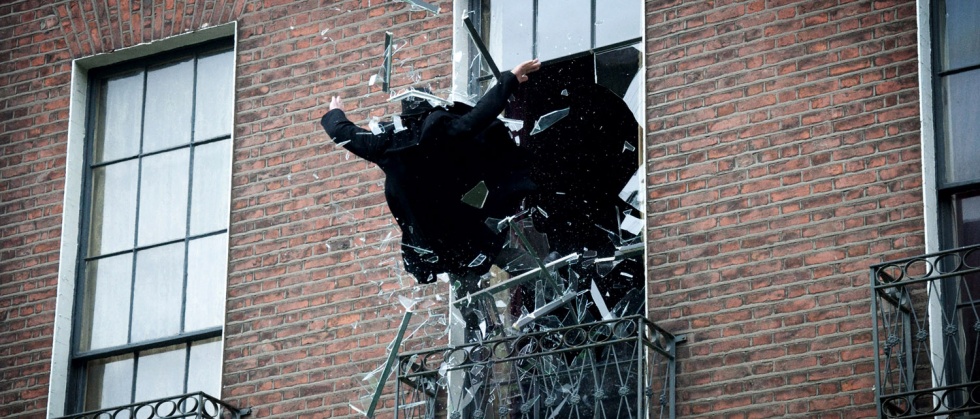
Steven Hartley’s character, Detective Sergeant Maurice Linklater, from Pure as the Driven (Series 2, Episode 1)
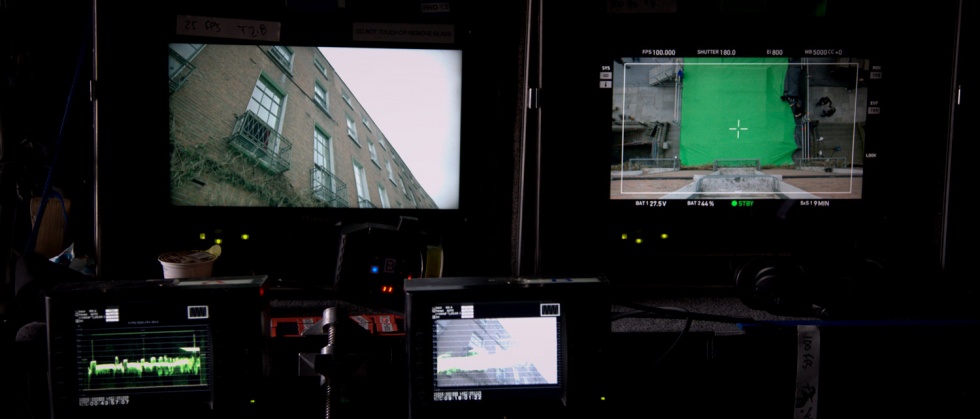 DAMAN: Can you tell me a little bit about how you got into the business and the circumstances in which you first got hired to work on the show?
DAMAN: Can you tell me a little bit about how you got into the business and the circumstances in which you first got hired to work on the show?
ED: In short, I met a girl.
Having completed my engineering based degree in product design, I followed an Irish girl back to Dublin leaving behind my ambitions to become an engineer or product designer.
The degree was enjoyable but I slowly fell out of love with most of the tasks a product designer did, bar the presentational side mocking up 3D renderings of my designs. So off I went to Dublin. I liked the idea of somehow continuing within 3D and very soon found an opportunity as a Runner within a small Post Production House. There I was surrounded by talented people creating visuals for Commercials, TV and Film. Spending all my extra time learning and offering up my 3D modelling abilities to support the team ended up with me being promoted from Runner to a 3D Generalist. It was in this capacity I learned my trade and over time and into another company as I shifted into Head of 3D before becoming a Visual Effects Supervisor.
When it was decided Ripper Street was going to be shot in Ireland it was inevitable that they would come and speak with Screen Scene, Ireland’s leading post production facility. We’ve been fortunate to build up a great catalogue of VFX work and have a reputation for quality. Also having then completed work on season one of Game of Thrones, it gave everyone confidence that we were the right guys for the show. I was delighted that Tiger Aspect awarded myself and SSVFX the project.
 DAMIAN: So what’s your starting point – do you read the scripts and then annotate them with details regarding what kind of shots and effects are needed for each episode?
DAMIAN: So what’s your starting point – do you read the scripts and then annotate them with details regarding what kind of shots and effects are needed for each episode?
ED: Yes. Most shows start with a script in parallel with a vision. A director will know how they wish to tell their story visually. Doing the first read through of a script allows my brain and the directors to align. Through doing breakdowns and discussing relevant scenes both parties can be confident of singing from the same hymn sheet.
Of course one of the main reasons for doing a breakdown is to ascertain how VFX is needed and thus a cost. Through each iteration of script and talks about each shots approach a visual effects, a shot list will be created. We also might do some concept work or pre-visualization to help firm up the design and look.
This is all done before shoot giving the VFX department and any connecting department’s time to design and plan their execution. It is vital that we have a plan when it comes to visual effects.
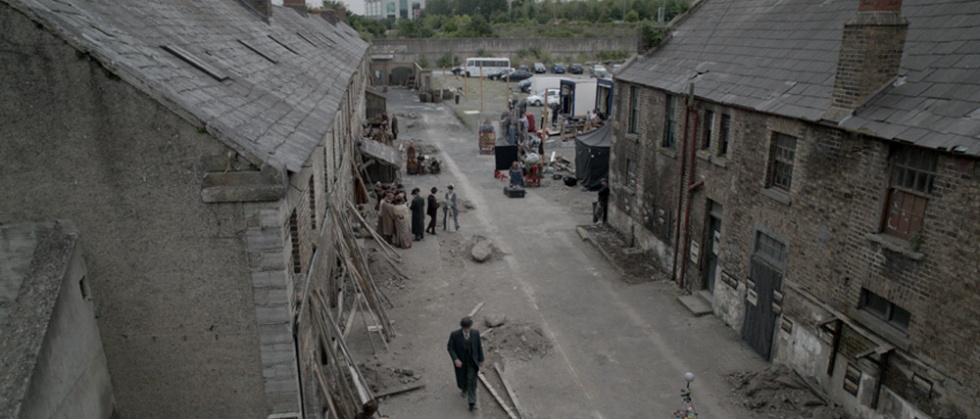
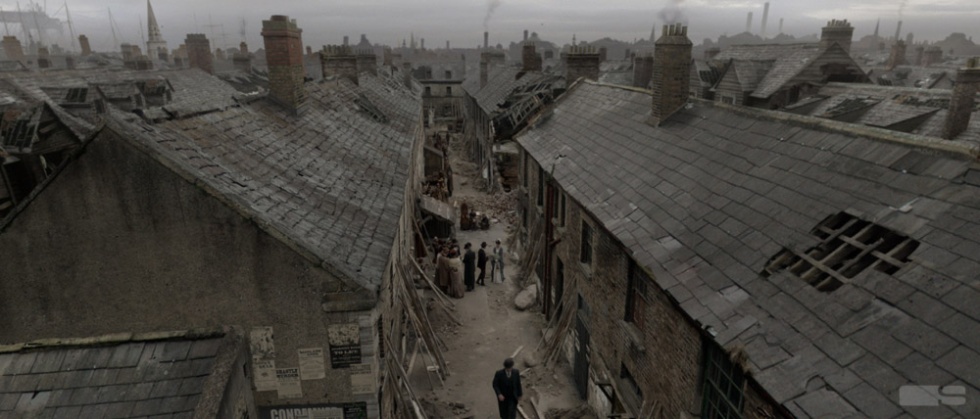 DAMIAN: In general, do you work on each episode after it’s shot in chronological order or do you perhaps bunch together similar effects requirements?
DAMIAN: In general, do you work on each episode after it’s shot in chronological order or do you perhaps bunch together similar effects requirements?
ED: Episodic television is always a challenge. Mainly because of schedule. It’s generally fast and furious. Normally we do work in chronological order, however when some episodes have challenging or large scale visual effects within them, we will start earlier to build assets and prep for when an episode editorially locks and we are green lit to complete the work.
With Ripper Street the edit begins in anger as soon as that ep’s shoot is wrapped. Within maybe three weeks we’d have a cut and VFX will get turnover. At the same time this is happening the next episode is shooting. As you can imagine planning is key.
DAMIAN: How many VFX shots would an average episode of Ripper Street need?
ED: There is never really an average episode. Ripper Street is story telling heavy. This means some episodes, like Whitechapel Terminus, require a vast amount of visual effects to tell the story. Others may not.
If I had to say an average it would probably be in the thirty – fifty shots then plenty of small clean-ups.
DAMIAN: How long might each episode take to complete and how long would you typically spend working on an entire series?
ED: From an episode’s edit lock to VFX being finished, it was often four to six weeks. Sometimes quicker.
In terms of a whole series, from the first contact to the last episode’s VFX shot completing would be around seven to eight months. Of course I and a few other key VFX people would be on the show from the start until the end, through pre-production, shoot and post.

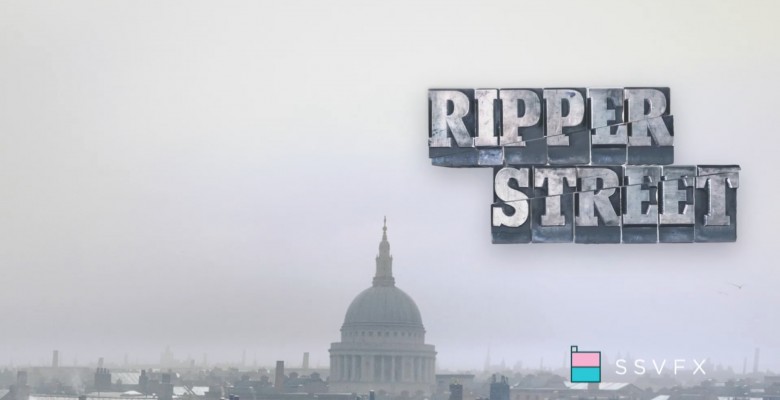

 DAMIAN: I’m wondering how you go about your research given the intricate historic details. So, for example, when we see VFX shots of Tower Bridge or St. Paul’s Cathedral, are there certain books or websites that you’ll consult in order to get the right look from a particular angle or distance from Whitechapel?
DAMIAN: I’m wondering how you go about your research given the intricate historic details. So, for example, when we see VFX shots of Tower Bridge or St. Paul’s Cathedral, are there certain books or websites that you’ll consult in order to get the right look from a particular angle or distance from Whitechapel?
ED: I love the research stage. It often happens through multiple departments, particularly Art department, and key individuals like Mark Geraghty and Stephen Daly [Production Designers] as well as the VFX dept. Ripper Street has always had a great writing team headed by Richard Warlow. They really know their period and locations and always have provided us with a great starting point. On some episodes we’ve consulted an historian. For the most part we do our own research after receiving any references from Mark or Stephen. It tends to be myself and my colleague Nicholas Murphy. We of course scour the internet, however I find for period visuals referencing old drawings and paintings extremely informative. Especially around the architecture. I’ve books of drawings from people like Falcon Hildred [below] which really do set a feeling and tone.

 Of course many of the larger London landmarks are still here today. Which means we are capable of photographing and de-aging back to Victorian times. For many of our big wide establishing shots we would build our landmarks in 3D, thus allowing us to ensure we can use for the correct angle, lighting and time of day.
Of course many of the larger London landmarks are still here today. Which means we are capable of photographing and de-aging back to Victorian times. For many of our big wide establishing shots we would build our landmarks in 3D, thus allowing us to ensure we can use for the correct angle, lighting and time of day.
I believe that to hide a lie, you need to ground them in many truths. Getting your research right is the first major step in achieving our illusions.
I’m sure my internet search history looks pretty interesting if you didn’t know I was researching for Ripper Street.
DAMIAN: Indeed – mine too! Now, I frequently feel as though VFX are used too much in film and television and, in my humble opinion, this results in some productions becoming tiresome and often having the same look and feel to them. Again, it’s just my opinion, but Ripper Street is a good example of getting the right balance. So, for example it would be both expensive and impractical to employ hundreds of extras for crowd scenes and creating the Victorian backdrops and skylines that obviously no longer exist is entirely justifiable. Although it’s your bread and butter, to what extent would you agree that VFX can be used too much or inappropriately these days?
ED: Visual Effects is a film maker’s tool. In recent years VFX has got so good it’s often invisible. This means we all spot bad visual effects a mile away. Also we’ve seen a big shift in terms of the amount of studio films that are these huge visual spectaculars, often heavily relying on VFX, whether superhero or comic book. With these stories we are all aware that they are computer generated characters or environments and unless they’re flawless we feel cheated.
However, there are so many films and TV shows that are littered with invisible VFX work that the audience never notices and therefore never criticizes or complements. The story telling is merely supported perfectly by the use of VFX.
With shows like Ripper Street budget often helps us be savvier with the use of VFX. When you’ve a small budget you must be creative and careful not to leave yourself with a difficult task of creating complex visuals with not enough time or resources. I’ve always believed in the saying that you’re only remembered by your worst VFX shot. On Ripper Street our VFX team have gone into production firmly believing that if there’s a practical way to find the solution we must exhaust that before going digital. Also taking it further, if there is something we can shoot to help the VFX then it’s worth capturing.
Dublin is a great place to shoot period Victorian London. There are many streets and locations that are less touched by modern influences which mean there is less for Art Dept, Construction and Visual Effects to do. We would often only add a landmark to a background. A Christchurch steeple or St Paul’s. Just the subtle suggestion of London.
Of course Visual Effects are often the best route to go. Crowd duplication is definitely one way VFX can deliver scale at a fraction of the time and cost Production would have. Hiring large crowds, putting them in costume and make-up, feeding and moving them has a tipping point. We’ve done quite a number of crowd duplications over the five seasons.

 DAMIAN: I think another good example of this is the Phossy Jaw effects from series two which were done digitally and that made perfect sense. However, where applicable, Waldo Mason steps in with the prosthetic special effects providing various severed heads, dismembered bodies and corpses which benefit from the actors’ ability to physically interact with them. I mean it would have been the wrong creative decision to animate any of these or the Elephant Man makeup that he created wouldn’t it?
DAMIAN: I think another good example of this is the Phossy Jaw effects from series two which were done digitally and that made perfect sense. However, where applicable, Waldo Mason steps in with the prosthetic special effects providing various severed heads, dismembered bodies and corpses which benefit from the actors’ ability to physically interact with them. I mean it would have been the wrong creative decision to animate any of these or the Elephant Man makeup that he created wouldn’t it?
ED: I love Waldo. He is a super talent and has brought some wonderful contributions to the world of Ripper Street. Prosthetics play such an important role with characters like the Elephant Man or with brutal injuries etc. However there are times where prosthetics need a little support. Often that’s with negative effects. Prosthetics tend to be additive. The Phossy Jaw effect was clearly a negative effect. We wanted to see into the jaw and mouth cavity.
We had originally planned to use prosthetics to create the edge/seam of the cavity and then green within. Waldo and his team had begun creating a mould of the actor’s head and were planning the sculpture, then the shoot schedule changed. It was brought dramatically forward. This meant Waldo was unable to deliver in time and we discussed the best approach. I was extremely keen that Waldo continue to sculpt and design the desired look. His expertise is in anatomy and he really understood the desired look. We therefore agreed with production that Waldo would provide the VFX department with a sculpture of the face. This of course meant that we shot the scene using a more traditional route of facial tracking markers. Little black dots placed on key areas of her face which we would use to track and attach the digital face.
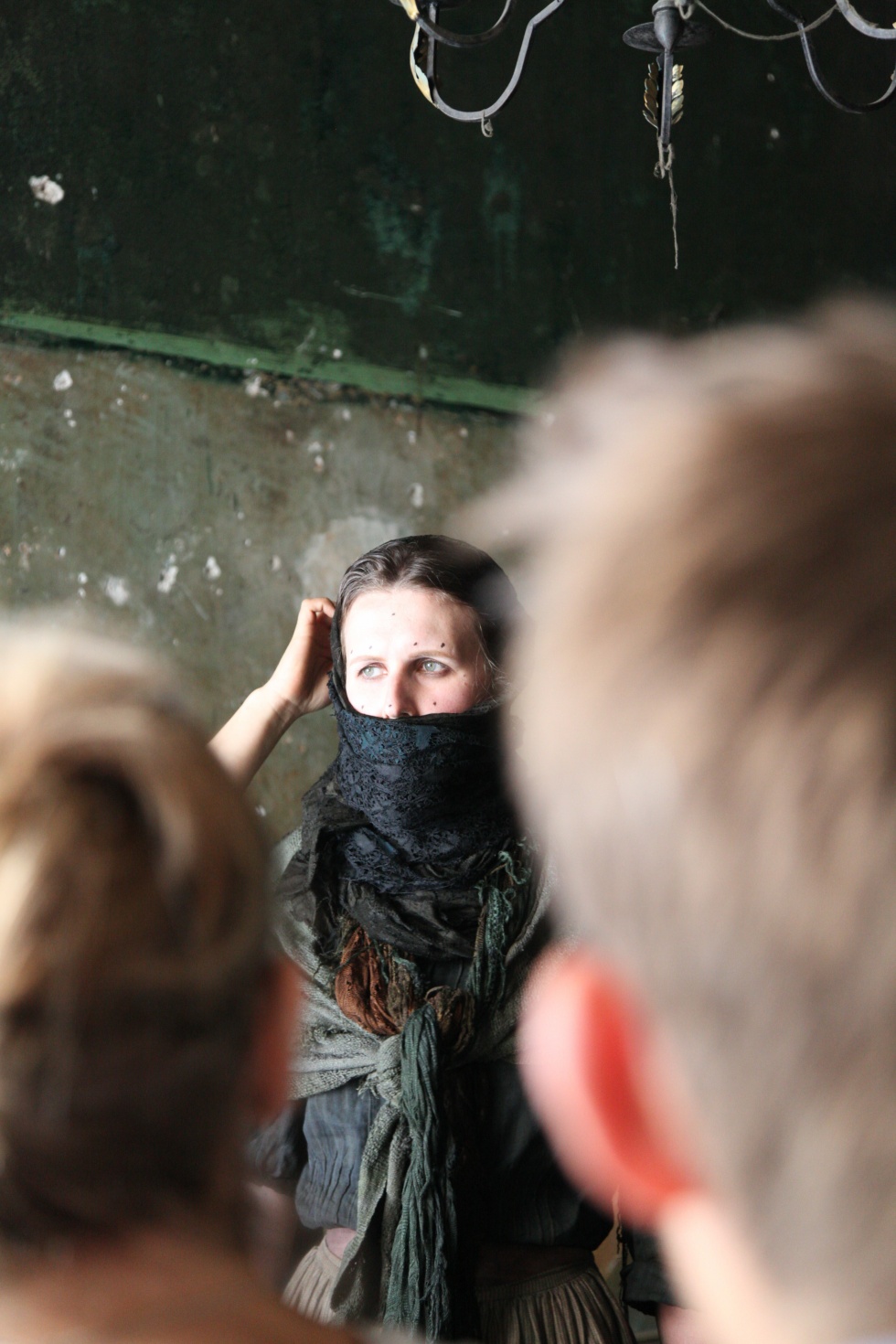
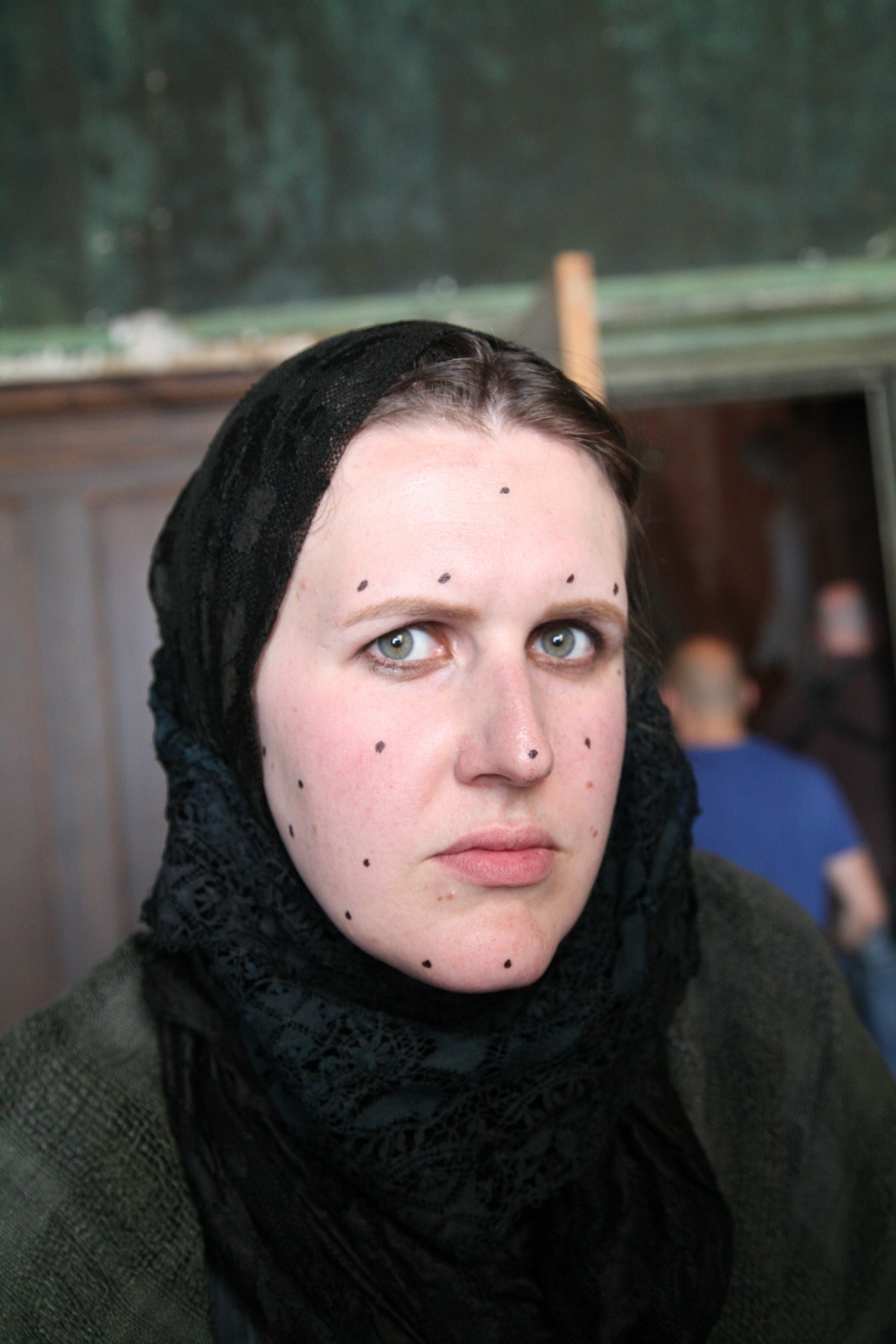
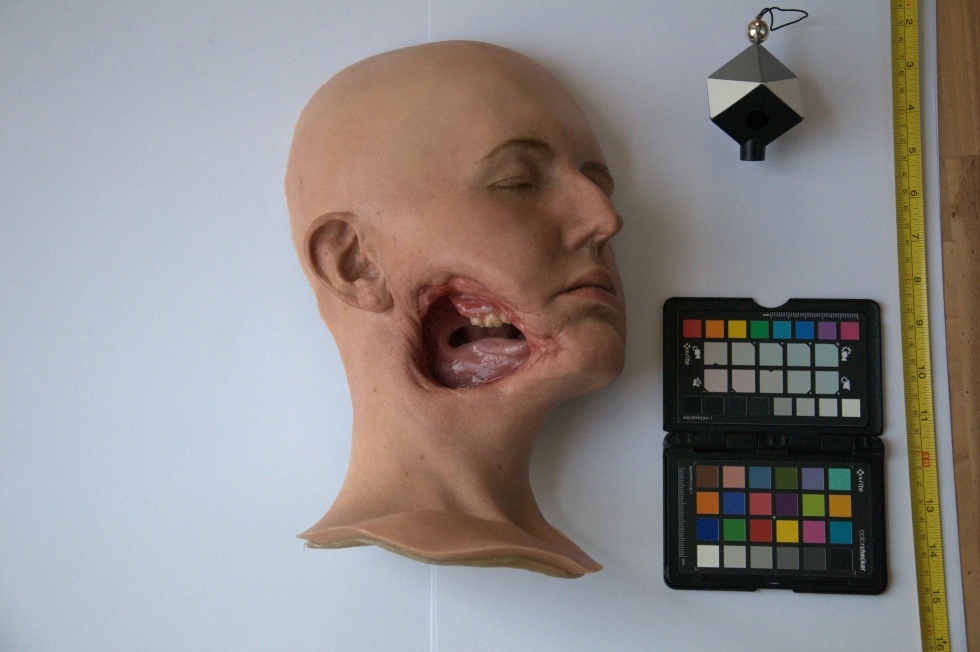



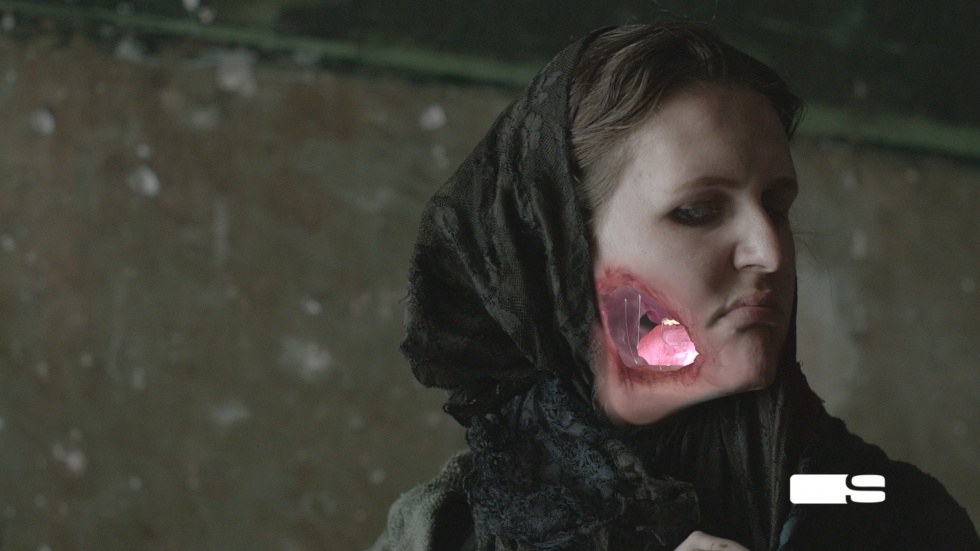
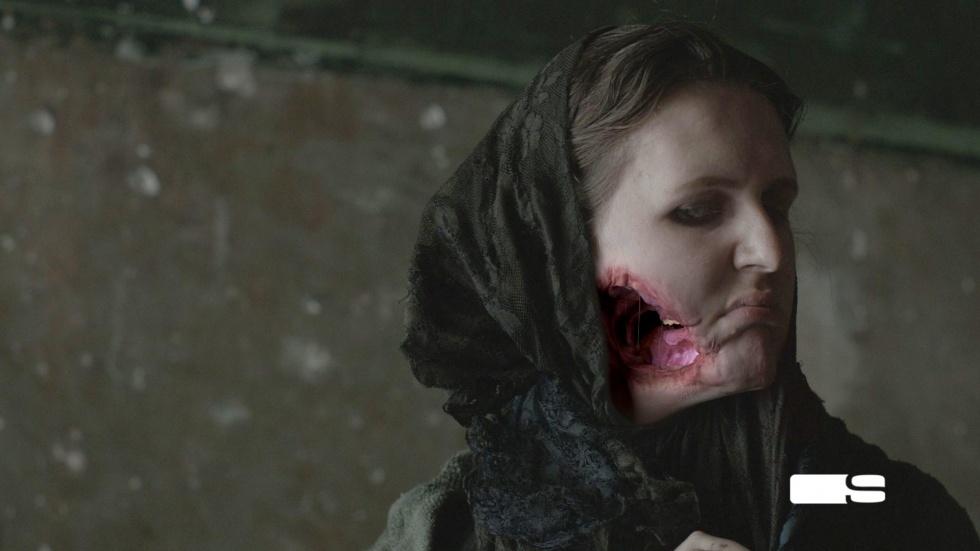
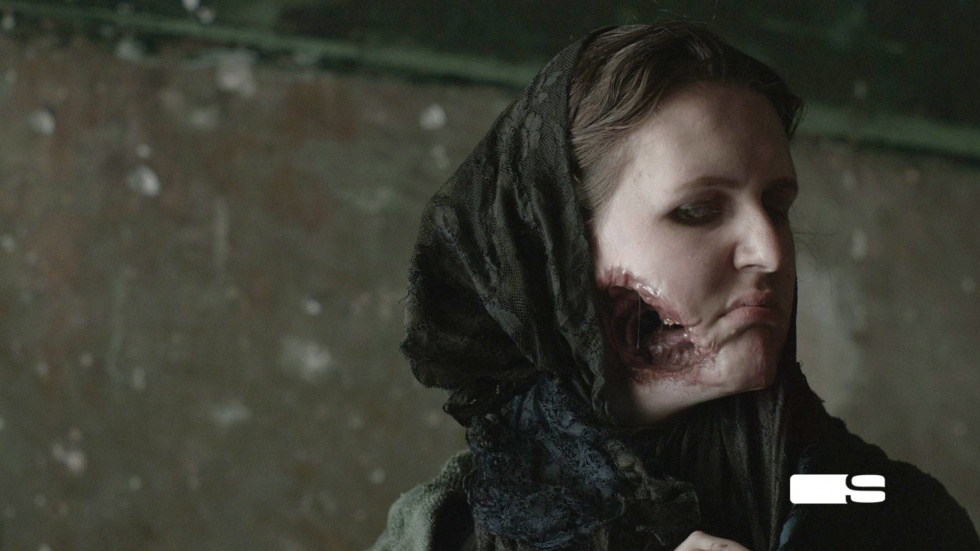 After Waldo supplied this beautiful model, we were able to digitally sculpt using it as a wonderful physical reference. Our team then added subtleties like tongue movement and spit dribble to really sell the horrific look and also the negative space through depth cues.
After Waldo supplied this beautiful model, we were able to digitally sculpt using it as a wonderful physical reference. Our team then added subtleties like tongue movement and spit dribble to really sell the horrific look and also the negative space through depth cues.
To answer your question though, it would have been wrong to go digital with the Elephant Man. Waldo’s work was fantastic. To replicate this full in Visual Effects is of course possible, but extremely time consuming, challenging and ultimately costly and when you look at the result we got through Prosthetics, why would you try?
DAMIAN: You mentioned Whitechapel Terminus earlier and the epic train crash from that episode from series three was obviously another highlight that stands out. What can you tell us about that?
ED: That episode and particularly the train sequence was by far the biggest visual effects contribution of the entire series. Initially it wasn’t planned that way, but to really do the narrative justice it ended up this way. Richard had written this very tense and dramatic sequence which at its core was a train robbery that left a train on a collision course through London. London of course is a bustling built up city. We shot our train sequence at a closed train track up in Loughborough. The track was surrounded in countryside. Richard’s writing had the train departing from St Katherine’s Dock and ending up derailing in Whitechapel.
As the edit developed the story telling became more and more clear. The tension and drama really needed the train shots to be surrounded by buildings and an ever growing sense of London. Most of the train shots had their entire environment replaced with only the train and bits of track remaining. It was a mammoth undertaking within the tight TV schedule. A lot of late nights and long weekends. It was worth it. It’s a great sequence and was the perfect start to season three.
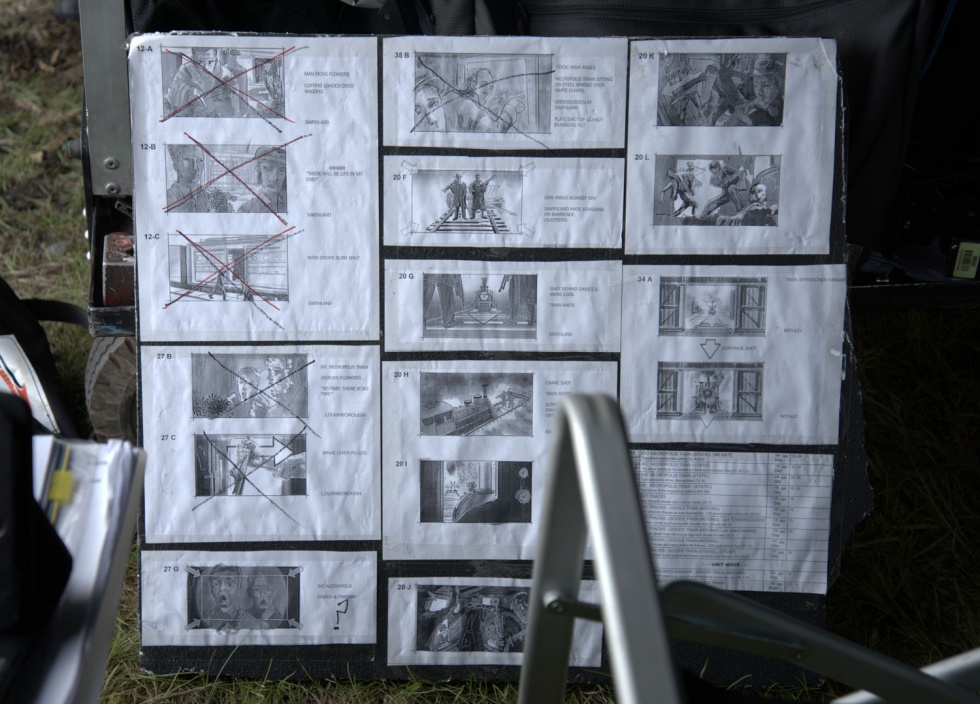


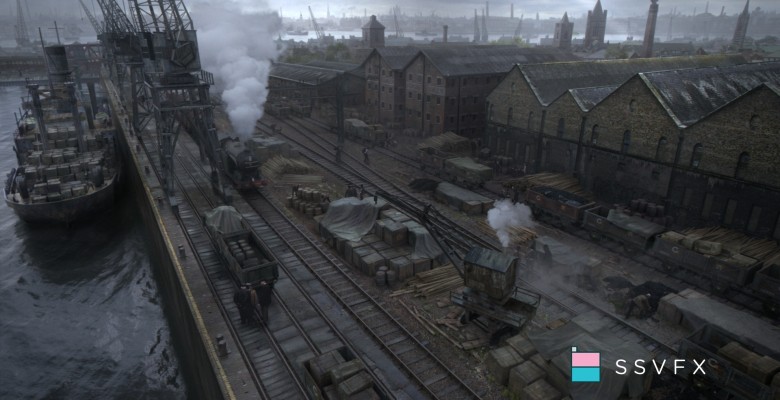 DAMIAN: What single individual effect have you found most difficult to create?
DAMIAN: What single individual effect have you found most difficult to create?
ED: There has been a few challenging shots. Whether it be the Phossy Jaw or the complexity of fully digital shots like the Diamond Mine or Hyde Park. But to be honest the difficulty tends to come with the sum of all within the tight TV time frame. You rarely get time to ponder your designs or try multiple routes. It’s fast and furious and ultimately all about planning and execution. If it was an unplanned VFX shot then sometimes that became difficult.
DAMIAN: And if you could pick just one effect that best exemplifies your work on the show over the past five years, what would it be?
ED: Such a difficult question. Five seasons of so many visual effects shots, with so many back stories to their creation and design. I think though the real success of our work has been the set extensions to establish the London period and location. Some as, I’ve said before, may be a small addition of a landmark or in many cases fully digital shots. I hope that most were invisible to our audience. I do like the St Katherine’s Dock shot of the train leaving at the start of season three. But again, so hard to choose.
I’d prefer to ask others what their favourites were.
DAMIAN: Perhaps fans will tell us and leave their comments below. Now then, you’ve been a little mischievous with some of your effects shots. Can you give us some examples?
ED: Oh yes. We’ve had a little fun.
 When populating a world you need to have a lot of artwork and even names for shops and signs. We’ve always had a bit of fun giving homage to the Ripper crew and team. We’ve had ships named after post supervisors, shops named after the directors, book stores named after our writers. One of our follicly challenged 3rd ad’s had a barbers named after him.
When populating a world you need to have a lot of artwork and even names for shops and signs. We’ve always had a bit of fun giving homage to the Ripper crew and team. We’ve had ships named after post supervisors, shops named after the directors, book stores named after our writers. One of our follicly challenged 3rd ad’s had a barbers named after him.
There are plenty of hidden gems if you know where to look.
DAMIAN: What projects are you currently working on?
ED: I’m just finishing off season seven of Game of Thrones. This year is even more spectacular than the last. It’s an unbelievable show. We’re also about to go into post on The Favourite, starring Emma Stone, Rachel Weisz, Olivia Colman and Nicholas Hoult and directed by Yorgos Lanthimos.
I’m also about to begin the shoot for Lenny Abrahamason’s The Little Stranger, which I’m very excited about. I’ve worked with Lenny for years, from his early days in commercials and it will be my third feature with him after Frank and Room.
A few other things are in the melting pot. It’ll be an exciting year.
DAMIAN: Ed, thank you very much indeed.
ED: Thank you Damian.
It’s been an absolute privilege to work on Ripper Street and that has been because of the people involved across the board. We’ve had so many wonderful directors helming the 36 episodes carefully penned by Richard and his team of writers and performed by the awesome cast, especially Matthew, Jerome, Adam and MyAnna. This foundation has led to the ultimate success of the show and its appeal.
We must though remember all the amazing crew that it takes to make a show like Ripper Street. All departments have excelled and it’s always been a pleasure stepping on the set of Ripper Street because of the warm and generous support of so many people. It really is a testament to [executive producers] Will [Gould] and Frith [Tiplady] at Tiger Aspect for forming the band, so to speak. They’ve been such a great driving force and I’m very much looking forward to working with them again.
Of course I owe a huge applause to our visual effects team in Screen Scene VFX. They’ve really brought their craft, diligence and talent to the show. It is their hard work and ethos that has helped Screen Scene VFX amass an ever growing ten award nominations or wins including winning an Royal Television Society Award and being nominated for a BAFTA, Visual Effects Society Awards, two Hollywood Post Alliance Awards and two IFTAs.
It’s hard to believe there will be another show quite like Ripper Street.
~~~
All the interviews and articles on this website are original and exclusive and I would ask that the copyright be respected. Therefore, please do not use quotes or any other information contained here without permission. Thank you.
Interview copyright © Damian Michael Barcroft 2017
Ripper Street images copyright © Ed Bruce/Screen Scene/Tiger Aspect Productions 2016
http://Click here for more information about Ed Bruce and the VFX company Screen Scene
~

